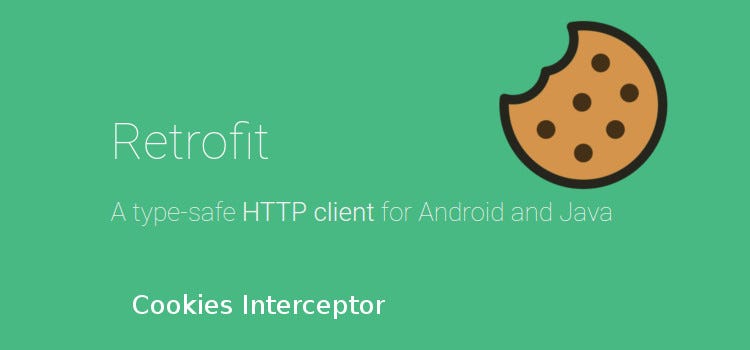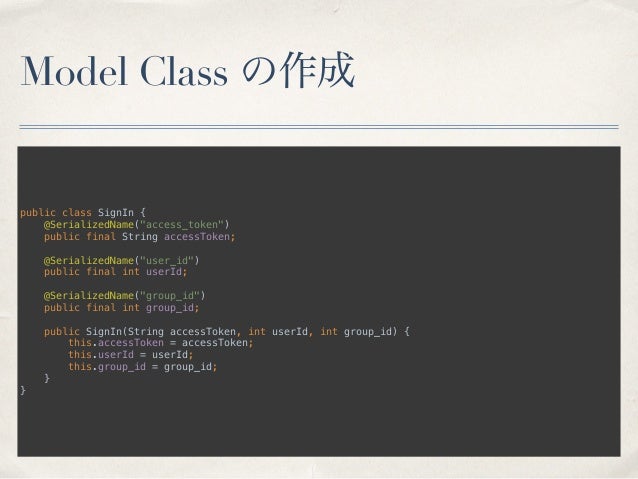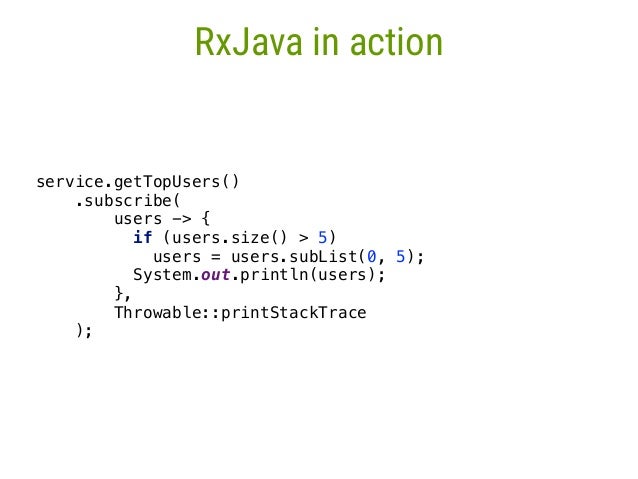
- USE RXJAVA WITH RETROFIT ENQUEUE HOW TO
- USE RXJAVA WITH RETROFIT ENQUEUE UPDATE
- USE RXJAVA WITH RETROFIT ENQUEUE ANDROID
To access the result in the main thread, you need to either create the AsyncTask class as an inner class, provide a callback interface in the AsyncTask interface and implement it in the main class, or create a BroadcastReceiver which would announce the main thread that it finished the background operation and hand the result. But since you are going to use RxJava, the nature of Rxjava is already asynchronous. So you have a choice of two: either you make the call.enqueue directly or you can user call.execute but wrapped with a service(I mean you have to handle the background work your self). It provides a callback function to get the response asynchronously. call.enqueue() // works in the background.

There are some limitations when it comes to updating the UI. In the case of retrofit you have the following methods to make the request: call.execute() // works in the foreground. Creating AsyncTasks to make REST calls can give one hell of a headache! To issue network requests to a REST API with Retrofit, we need to create an instance using the Retrofit.Builder class and configure it with a base URL. Retrofit can also be extended by adapters to get involved with other libraries like RxJava 2.x, Java 8 and Guava.
USE RXJAVA WITH RETROFIT ENQUEUE UPDATE
It allows you to perform network operations (or any other) in a background thread and update the main thread. One of the solutions is to create an AsyncTask.
USE RXJAVA WITH RETROFIT ENQUEUE ANDROID
In Android, we can use RxAndroid in addition to RxKotlin for added Android flavors and. FOR ASYNCHRONOUS Network Calls use the enqueue() method, and passing an anonymous Callback object.
We'll build an example application interacting with the GitHub API using the standard Retrofit approach, and then we'll enhance it using RxJava to leverage the advantages of Reactive Programming. We have to enqueue it with a CallbackUSE RXJAVA WITH RETROFIT ENQUEUE HOW TO
Since making network calls is not allowed on the UI thread (the main thread which takes care of updating the UI), you had to find workarounds.Ĭreating a separate thread is not an option since it lacks communication with the main thread and no updates to the UI can be made. This article focuses on how to implement a simple RxJava-ready REST Client using Retrofit. Result.If you are passionate about developing Android applications, you sure had to make a REST call to manage a resource at some point.

Result.Success(Data(data1Response.body()!!,data2Response.body()!!))

If (data1Response.isSuccessful & data2Response.isSuccessful)

addConverterFactory(GsonConverterFactory.create())ĪPIService service = retrofit.create(APIService.class) Ĭall.enqueue(new Callback() void onResponse(Call call1, Response response) We'll build an example application interacting with the GitHub API using the standard Retrofit approach, and then we'll enhance it using RxJava to leverage the advantages of Reactive Programming. Current code: Retrofit retrofit = new Retrofit.Builder() It included the combination of Retrofit requests, using RxJava to chain the operations along, saving the data to RealmDB and cleaning things up with Kotlin extension functions. Overview This article focuses on how to implement a simple RxJava-ready REST Client using Retrofit.


 0 kommentar(er)
0 kommentar(er)
